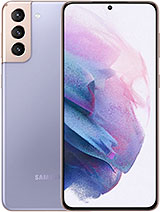Samsung Galaxy S21+ full review By GSMArena Official
Hey, what's up guys will here for GSM arena? The galaxy s21 plus is a flagship, that's incredibly similar to the regular s21. So what exactly does this phone have that the vanilla model doesn't, and is this the one to go for? If you don't want to pay the big bucks for the ultra, let's find out in our full review, the galaxy s21 plus is an elegant. Looking flagship made of curved glass with an aluminum frame. Ours is the variant of the phone with an Enos chipset, not a snapdragon one. The signature design feature of the s21 phones is that the camera bump wraps around the edge of the phone and melds into the frame. It looks great, especially in our phantom violet finish.
So what are the main differences between the s21 plus and the regular s21? Well, the first and most obvious one is the size. The plus model is built around a 6.7 inch display and weighs in at about 200 grams. So it's large, but nothing that outrageous. Some might prefer the more compact size of the 6.2 inch s21, though both phones are equally usable. One-Handed.
The s21 plus display is a flat dynamic AMOLED with a 1080p resolution, an adaptive 120hz refresh rate and a small punch hole for the selfie cam. The resolution is less than the HD of last year's model, but there, if you enabled 120hz the resolution, would bump down to 1080p. Anyway, the high refresh rate makes moving elements on screen, look super smooth, and since it's adaptive it will go down to save power. If you stop touching the display or play lower frame rate content. Content on this screen looks great.
The rich, colors, good sharpness and deep black levels are what you'd expect from a flagship grade: Samsung AMOLED and compared to a smaller phone like the s21. The larger screen size does make a bit of a difference too. Colors can be tuned to be very accurate in settings and the display is quite bright. We measured a maximum of about 460 nits with a manual slider, and a boost up to 880 nits in auto mode went out in bright sun. Now, let's flip over to the back, the s21 plus has a curved back panel made of gorilla glass victim, while the s21's is plastic, so the plus model is probably tougher, but we haven't actually tested that both models seem pretty sturdy, though, and of course, with all Samsung flagships, you get full ip68 rated waterproofing and both phones actually feel pretty similar in the hand because of their matte finish.
Maybe there is a difference here with the smoothness, but it's very subtle. The third way that the s21 plus differs from the other s21 models is battery capacity. The plus has a 4 800 William hour battery, as opposed to 4000 on the s21 and 5000 on the ultra battery life on the plus model is noticeably better than the s21 in our tests. It scored an endurance rating of 114 hours, actually the same as the ultra this year. Samsung's flagships, don't include a charger in the box, so you'd have to find one somewhere else, but you do have support for 25 watt charging as well as 10 watt wireless charging and reverse wireless charging.
With a 25 watt, Samsung adapter, we were able to charge the s21 plus from zero to 55 percent in half an hour. This is pretty much the same across all three s21 models, probably by design the rest of the s21 pluses features are also virtually identical to the regular s21. You get an ultrasonic fingerprint reader, which has been improved over the last year. Waking up and unlocking the phone is faster now and more reliable for audio. There is a stereo speaker setup with one bottom firing speaker and the earpiece acting as the second one.
The output is slightly louder than the s21s, though sound quality is the same with pleasant, vocals and highs, but not much bass. You don't get a headphone jack here. You'll need to use an USB dongle or connect wirelessly, and this year's storage isn't expandable on the s21 phones either, but you do get 128 or 256 gigs on board the plus model. The user interface of the s21 plus and the other s21s is Samsung's one UI 3.1 based on android 11. It brings some changes compared to previous versions.
For example, the volume control sliders are now vertical instead of horizontal, and the gallery is much easier to navigate now, thanks to a filmstrip of thumbnails down at the bottom. One UI 3 also integrates plenty of features from the new version of android. You get notification history, which you can access in settings and when you share something you can customize, which apps appear at the top of the share sheet so quickly. Sending things to your favorite apps is easier powering. All of these features is either an Enos 2100, like we have in our unit or snapdragon 888 chipsets.
Both are cutting edge and built on a 5 nanometer process. The Enos model scores well in benchmarks, though it doesn't exactly blow away last year's flagships. In fact, the scores are in the same ballpark as the top 2020 android chip, the snapdragon 865, plus still, this level of performance is awesome. Everything runs super smoothly, including games, plus you get support for 5g network connectivity too. Finally, let's go over the cameras.
The triple camera setup is the same as the regular s21s there's a 12 megapixel main camera, a 12 megapixel ultra-wide angle, cam, with a fixed focus and a 64 megapixel telephoto camera that provides three times lossless digital zoom, a software update, has come out pretty recently. It addresses a lot of the nitpicks we had in previous reviews about the camera quality of the s21 phones. So, let's see what things look like now photo quality from the main camera is as expected, virtually the same as you'd get on the s21. These photos look great with wide dynamic range and nice colors plenty of detail and well controlled. Noise.
Shots from the ultra-wide cam have good sharpness for this sort of camera. Again, just like the s21 colors are nice not as over the top, as on previous Samsung models and dynamic range is decent, both the s21 plus and the s21 achieve zoom by cropping from the center of the telephoto cam 64 megapixel sensor and upscaling at the advertised three times magnification. The effect of the upscaling is noticeable with some loss in sharpness and contrast compared to a full size.64 megapixel shot still. The overall effect is decent and very usable, since the devices are so similar I'll. Just stick to the results from the s21 plus from here on out portrait, shots can be taken with a telephoto camera at about a 2.5 times zoom, which is the default or with the main camera. We like the zoomed portraits better.
The edge detection seems a little more on point, and you're able to keep a more comfortable distance from your subject now on to nighttime shooting the main cam performs well with nice exposure and dynamic range, the noise reduction is quite relaxed, which means you get some graininess, but more resolved detail. Turning on night mode gives you a much brighter exposure and the noise is eliminated along with some of those finer details, shadows are lifted and lights lose some of their warmth. The ultra-wide camera doesn't do a great job at night you get a dark exposure and plenty of noise. The results are still usable if there is enough light night mode improves on this a lot brightening, the shadows and removing that noise. The results from the telephoto camera are much.
The same, don't expect something great, but better lit subjects like the size of these buildings come out. Fine night mode brings nice improvement in detail here for both straight edges and textures, and also cleans up. The noise selfies are taken with the 10 megapixel front facing cam, and these are good. You can choose between a cropped or a wider field of view, and the selfies are sharp, with wide dynamic range and plenty of detail. Now on to video recording selfie videos at 4k at 30fps have plenty of detail, but are a bit noisy.
We like the footage in 4k at 30fps from the main cam. It has pleasing, colors and excellent dynamic range. You can also film in 4k at 60fps, with the main cam too, but it isn't as good there's less detail and too much sharpening 4k 30 from the ultra-wide cam is great, with lifelike colors nice detail for this type of camera and respectable dynamic range and three times zoom footage again.4K at 30fps is pretty good too. While there is some noise, you get a decent amount of detail.8K footage is taken with a 64 megapixel cam at 24fps. It's actually not all that sharp or detailed.
So it's not very useful unless you want to snap some stills out of it. Electronic stabilization is available in all modes, including 8k and 4k at 60fps. The as generally does a good job in smoothing out your footage. So that's the galaxy s21 plus it offers all the same great flagship features you'd find on the regular s21, and on top of that, you get a larger body and display gorilla glass Vitus on the back and better battery life. Alright, it's not that different, but the difference in price is definitely noticeable.
You'd pay, 25 percent more for the plus model. At the end of the day, the s21 plus just doesn't make a lot of sense. If value is what you're after you can save money with last year's s20 plus another very similar device, or just go for the s21, which also has the compact form factor going for it or if you're already ready to spend this much. Maybe you should consider just going all in for the s21 ultra to get the most cutting edge Samsung. The s21 plus, is by no means a bad phone, but because of all those other options is tough to recommend.
Thanks for watching guys, stay safe and see you on the next one.
Source : GSMArena Official





























